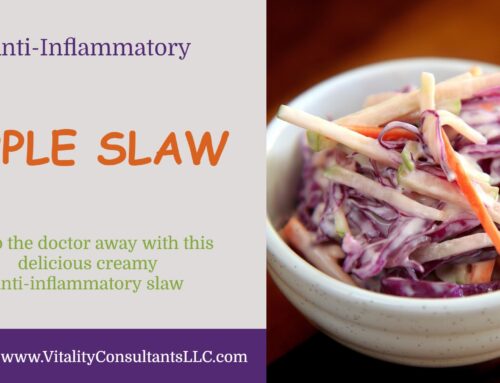At one time, salt was so valuable that Ancient Greeks used it as a form of currency. In fact, the word salary comes from the Latin phrase salarium argentum, meaning “salt money”.

Salt and Sodium
Salt has received a bad reputation over the past decade, due to its correlation with high blood pressure. However, sodium plays an important role in our bodies and we simply can’t live without it. The mineral is used to maintain proper fluid balance, regulate blood pressure, and make muscles (including the heart) relax.
The 2015 Dietary Guidelines for Healthy Americans advise individuals to eat no more than 2300 mg of sodium, or approximately 1 tsp of salt, each day. People who are at risk for heart disease and hypertension have further restrictions and are recommended to eat less than 1500 mg per day. Unfortunately, the average intake is about 3400 mg (almost 50% more than the recommendation).
So where is all this sodium coming from? Only 5-10% of sodium comes out of your salt shaker at home. Approximately 10% is found naturally in food. The rest is added to food during processing. Sodium can be found in foods that aren’t as obvious as pretzels and popcorn. You can find it in bread, pasta, canned foods, lunch meat, and sauces. For example, 1 teaspoon of hot sauce has 190 mg of sodium. While that doesn’t sound like a lot, consider this. Using 1/2 cup of the same hot sauce contributes 4560 mg of sodium to your diet – almost double the daily recommendation! An easy solution for this is to make your own dips and sauces.
Tips for reducing intake
- Eat more fresh foods and less processed foods. Processed foods have salt added to them to extend their shelf life.
- Drain and rinse canned foods whenever possible. This can reduce the sodium content of foods by more than 40%.
- Stay away from low-fat products. When food manufacturers take fat out of a food, they look for other ways to make it taste good. This usually means adding salt or sugar.
- Taste your food BEFORE using the salt shaker. A lot of people put salt on their food before knowing whether it needs it or not. Often times, food tastes just fine without the added sodium.
- Read food labels! Products can have a wide variety of sodium levels in them. For example, crackers can have anywhere from 25 to 270 mg of sodium per serving. Find products with less sodium to keep on hand.
- Use herbs and spices to season your food. I cannot talk enough about this! You can grow your own herbs at home, which are pretty to look at, freshen up your food, and make cooking a little more fun. Fill your spice rack with a variety of spices – and use them! Not only can you make food taste great without adding salt, but you can completely change the flavors of a dish that may have been getting boring. See below for my favorite savory spice blend.

Savory Spice Blend
Ingredients
- 2 ½ Tbsp paprika
- 1 Tbsp kosher salt
- 2 Tbsp garlic powder
- 1 Tbsp pepper
- 1 Tbsp onion powder
- 1 Tbsp cayenne pepper
- 1 Tbsp oregano
- 1 Tbsp thyme
Instructions
- Mix all ingredients in a bowl until well combined
- Store in an airtight container for up to 6 months.
If you’re interested in an anti-inflammatory lifestyle and more information and recipes like this, check out The Official Anti-Inflammatory Diet Masterclass. Or email us at info@VitalityConsultantsLLC.com for more details.







